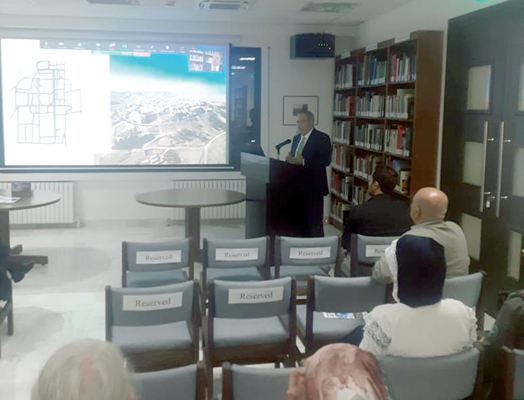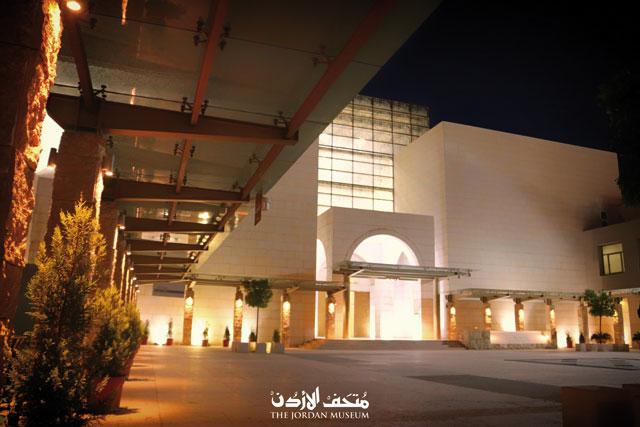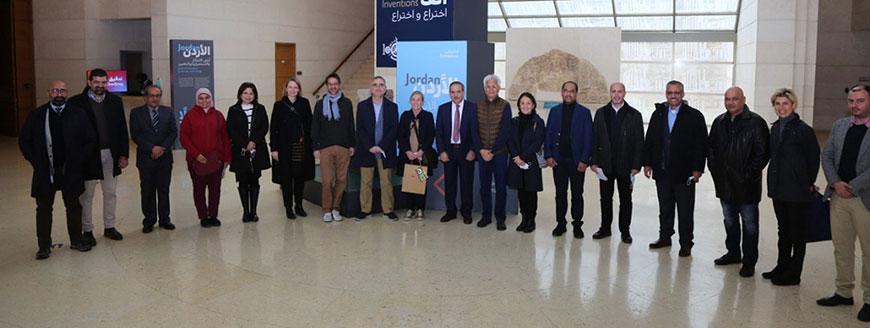You are here
'Jordan Museum is an ever living testimony to Kingdom's history'
By Renad Aljadid - Jun 14,2018 - Last updated at Jun 14,2018
AMMAN — Visitors of The Jordan Museum are given the chance to travel through time and history, as displayed artefacts tell stories of a land that witnessed the presence of many civilisations over the course of more than 1.5 million years, an expert said.
In an interview with The Jordan Times, Director General of The Jordan Museum Ihab Amarin said: "The museum is not only a touristic gate, but also a part of the national identity as it tells the story of the country and its people."
Among several valuable artefacts on display at the museum are the famous 9,700-year-old Ain Ghazal statues, which are among the earliest large-scale representations of human form, according to Amarin, who also cited the nearly 5,000-year-old Tulaylat Al Ghassul Wall Painting, the Tal Siran Bottle from which the names of Ammonite kings came from and the unique Dead Sea Scrolls and much more.
"When looking back at history, we see how crises and challenges were the sparks of creativity and innovation," Amarin said, stressing that "by reading the museum's artefacts, we are exploring the history so as to shape our present and plan for our future".
The water pipe models present at the museum for instance show the advanced water systems that Nabataeans created in Petra to handle the floods caused by seasonal rains, the museum official said.
"It is very inspiring for today's generations to see how their ancestors' turned problems into great inventions," he continued, stressing "This is how nations can recruit national museums as an educational tool."
Amarin stated that the industrial revolution started in Jordan more than 5,000 years ago, referring to bronze made tools, which serve as an "evidence that people managed to extract copper from rocks in spite of the limited resources".
The museum's location and design also have a "unique" story to tell. "The museum is located in Ras Al Ain in downtown, which is the heart of Amman and previously its source of life as it was the city's water upstream," Amarin explained.
"The building design also symbolises our civilisation's progress across the ages, as the lower layer is made of rough rocks while the modern glass and metal begin to be noted as the building goes up," he elaborated.
For Amarin, the museum is a project that started and "will never finish" as constant renovations, expansions, changes, and the inclusion of technology in the exhibition keep it alive. "If we want to tell the story of a living heritage, then the museum itself must be alive," he stated.
Previously called the National Museum, the institution changed its name so as to feature Jordan's past, present, and future, and not only the past, according to Amarin.
"The entrance features the names of all the governorates and we call it 'our museum' so as to let people feel a sense of community ownership," the director general said, noting that "we hope that our visitors will spread the museum's mission and the Kingdom's values."
According to the museum official statistics, the institution welcomed 63,000 visitors in 2017, compared with 17,000 in 2015, the bulk of whom were tourists, citizens, foreign residents, as well as school and university students.
During the first third of 2018, 34,000 visited the museum, Amarin noted that, voicing his "warm welcomes" to all individuals willing to explore the story of Jordan.
The museum will open its doors to visitors during the Eid Al Fitr holiday as of Sunday June 17.
Related Articles
AMMAN — A lifelong passion for history and archaeology led Ihab Amarin, director of The Jordan Museum, to pursue the field as his profession
AMMAN — Nestled in the heart of the capital city is a museum that chronicles a million years of historical events, inventions and ways of li
AMMAN — The Jordan Museum's Director General Ihab Amarin and senior museum staff welcomed the World Bank Executive Directors delegation, led


















